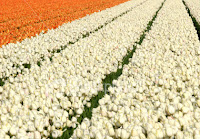This is not very common with Raja’s work. Like the male chorus, mixed chorus on folk format is not that common. This involves use of both male and female voices in folk format (at least one of them should be in folk format).
Megam Karukkaiyile from Vaidegi Kaathitunthaal (Tamil 1984). This is a masterpiece of sorts where Raja shows his mastery over choir arrangement. He uses both male and female voices to create the impression of esapaatu, a traditional folk technique, where the singing between the groups alternates. However, he does something more clever. He makes the male voices sing Western, when the female voices sing folk and vice versa. The song starts off with the female voices singing ‘thana than thana’ which is traditional and the male voices go ‘aahaa oho aahaa oho’. Initially they alternate a few phrases and you can soon notice that they merge, both the groups singing the same and different phrases. When Raja sings the pallavi the male voices go single syllable ‘aaa’ and when Uma sings, the female voices so ‘aaa’. Notice the male voices in tenor and the female in alto. That’s a typical Raja curveball. Do you call this esapaatu or pure western choir? It depends on how you view it.
The pallavi have single syllable male and female chorus phrases between the respective gender’s lines. The second interlude has some great chorus arrangement where it is pure folk. Both the male and female singers alternate between ‘hoy hoyya’ and ‘aaa’. The second charanam is arranged similar to the first.
Let's hear Megam Karukkaiyile...
Enjodi Manja Kuruvi from Vikram (Tamil 1986). This is one of those Raja tracks that have a mix of so many things. We will focus only on the folk elements in this section. The prelude has some neat male western choir singing some crazy lines in some unknown language. The male/female chorus accompany SPB when he sings the pallavi. The second prelude has some male/female folk chorus.
Naan Erikarai from Chinna Thayee (Tamil 1992). There is mixed choir accompanying Yesudas and not just the bass guitar! The pallavi has some female chorus repeating the female singers’ lines. Towards the end of the pallavi, there is male choir repeating some of the lines. The bass guitar is almost the third main voice in this track – very prominent and sings its own tune. While you hear so much bass these days, it still beats me on how Raja arranges these beautiful bass lines where a second tune other than the main one does not bother anyone!
Let's hear Naan Erikarai...
Pillai Nila from (Janaki version) from Neengal Kettavai (Tamil 1984) – interludes have female and male choir in IL1 and IL2. The pallavi has children doing the ‘la la la’ chorus. The first interlude is arranged with two sets of female voices in full folk mode in the esapaatu format. The second interlude is set to folk with male voices.

